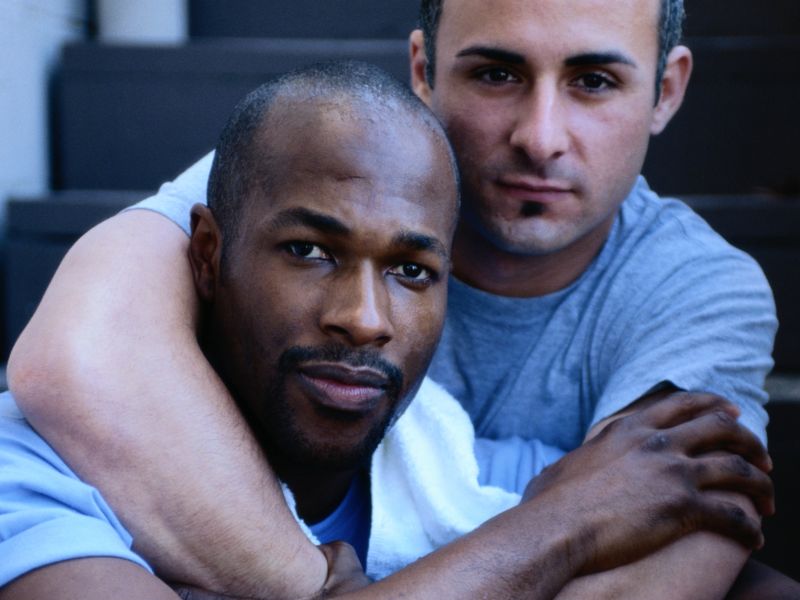
Wednesday, June 1, 2016

WEDNESDAY, June 1, 2016 (HealthDay News) -- The number of Americans who say they've had sexual activity with someone of the same gender has doubled since the 1970s, a new survey reveals.
And, during the past 40 years, the number of Americans who say they have no problem with same-sex sexual activity has more than quadrupled, the survey showed.
"This data showed strikingly how quickly opinions on same-sex sexuality changed," said study lead author Jean Twenge, a professor of psychology at San Diego State University.
The trend, she added, "suggests a fundamental shift in sexual behavior toward more freedom and the abandonment of previously strict social rules against same-sex sexuality."
The findings come from the National Opinion Research Center's General Social Survey, spanning 1973 to 2014. Participants were between 18 and 96 years old.
More than 34,000 men and women answered questions about their attitudes on same-sex sexual relations. And, 28,000 shared details about their own sexual experiences, according to the survey.
In 1973, acceptance of same-sex sexual relations was just over 10 percent. By 2014, almost 50 percent said they were OK with same-sex sexual activity. The biggest jumps in acceptance occurred after 1990, the survey found.
The trend toward acceptance was even more dramatic among younger Americans. In 1990, only 15 percent of people aged 18 to 29 said same-sex relations were "not wrong at all." By 2014, 63 percent of that age group had no issue with same-sex relations, the findings showed.
What's more, about 8 percent of men and 9 percent of women now say they've had at least one same-sex sexual experience. That's up from just 4.5 percent of men and 4 percent of women back in 1973.
The results likely indicate that "more same-sex sexual activity truly is occurring than in previous decades," Twenge said.
"However, we cannot rule out the explanation that people are more willing to admit to such activity," she added. "But, even if so, that would still suggest a cultural shift, though in willingness to admit to same-sex behavior rather than the behavior itself."
Twenge said that shift in attitudes should be seen as part of a larger ongoing cultural shift. Strict adherence to social norms is gradually giving way to a less restrictive embrace of individual freedoms and expression.
"The fundamental cultural shift toward individualism is more likely to be the cause of the shift (on same sex issues) than any one event or even a few events," she said. "Especially given that the changes happened over several decades rather than happening all at once in a year or two."
Psychiatrist Dr. Jack Drescher said the survey findings "are not entirely surprising." He's a clinical professor of psychiatry at New York Medical College in Valhalla, N.Y.
"It was in the 1990s that the U.S. began its first open national policy discussions about homosexuality, centered around the issues of gays in the military and marriage equality," he said. "It was inevitable that open discussions would reveal many of the irrational prejudices about homosexuality that were normally spoken in private."
And, Drescher added, "with increasing conversation came increasing acceptance."
But Ilan Meyer noted that the survey trends show that "homosexuality is still stigmatized by a large proportion of Americans." The survey showed roughly half of Americans said they don't accept same-sex relations.
Meyer is a senior scholar for public policy at the Williams Institute for Sexual Orientation Law and Public Policy at the UCLA School of Law in Los Angeles.
He also said the changing trends don't reflect an actual jump in the number of people who identify as gay or lesbian.
Most of the increase in same-sex experience seemed to involve bisexual interactions with both male and female partners, Meyer said. And even that activity, he added, may be chalked up to an experimental phase of youth, rather than as a predictor of life-long exclusive same-sex relations.
Still, Meyer said the findings were "remarkable" and "real." He suggested they are, at least in part, reflective of a growing liberalization of attitudes and shifts in the cultural status quo.
The study was published online June 1 in the Archives of Sexual Behavior.
SOURCES: Jean M. Twenge, Ph.D., professor of psychology, department of psychology, San Diego State University; Jack Drescher, M.D., psychiatrist and psychoanalyst, private practice, New York City, and clinical professor of psychiatry, New York Medical College, and adjunct professor, New York University; Ilan H. Meyer, Ph.D., psychiatric epidemiologist, and senior scholar for public policy, Williams Institute for Sexual Orientation Law and Public Policy, UCLA School of Law, Los Angeles; June 1, 2016, Archives of Sexual Behavior, online
HealthDay
Copyright (c) 2016 HealthDay. All rights reserved.
News stories are provided by HealthDay and do not reflect the views of MedlinePlus, the National Library of Medicine, the National Institutes of Health, the U.S. Department of Health and Human Services, or federal policy.
- More Health News on:
- Gay, Lesbian, Bisexual and Transgender Health









































No hay comentarios:
Publicar un comentario